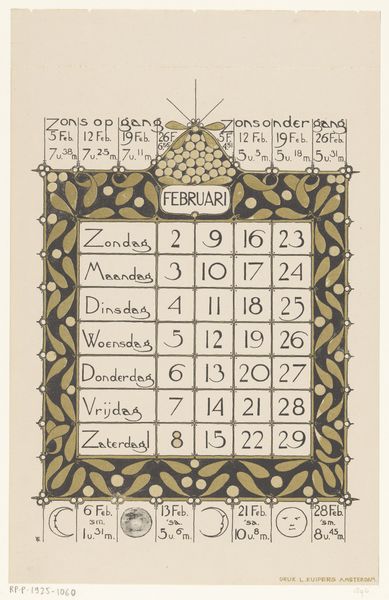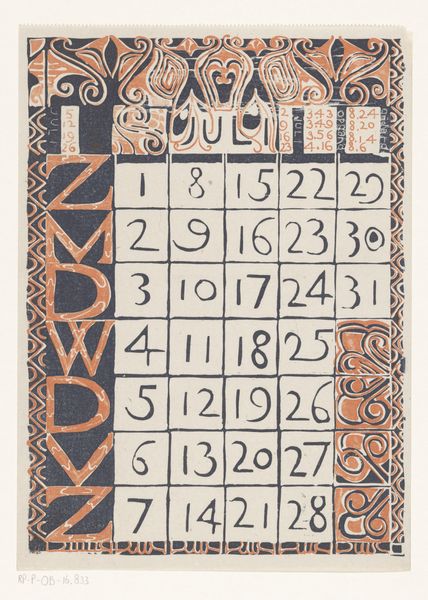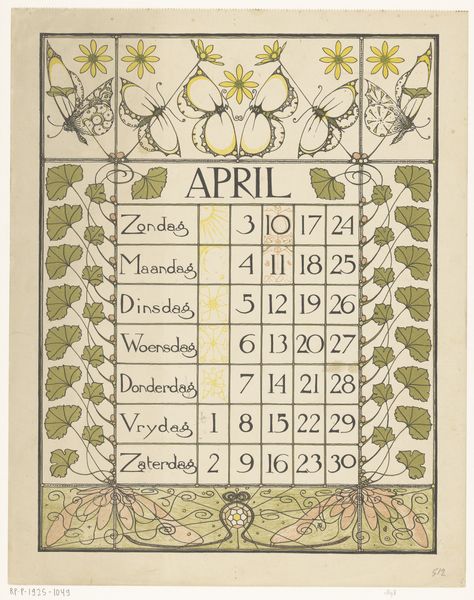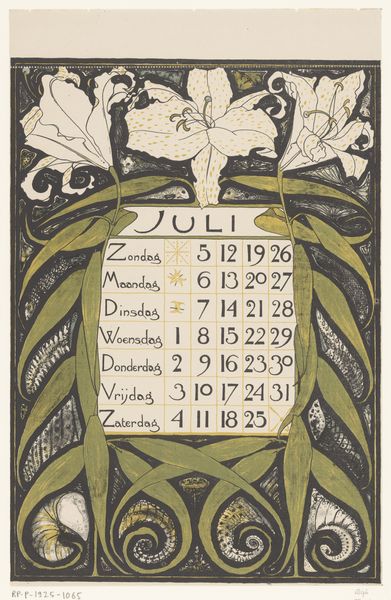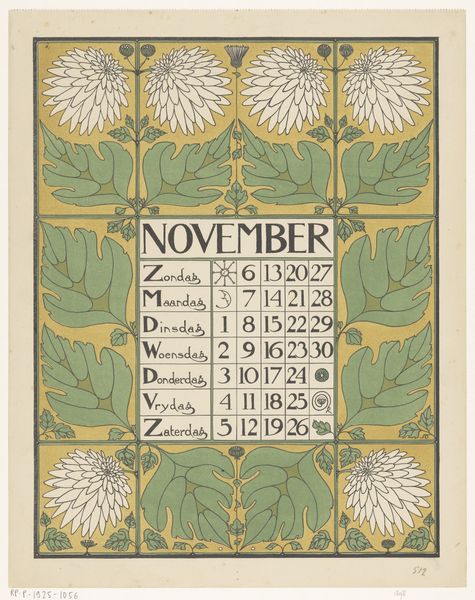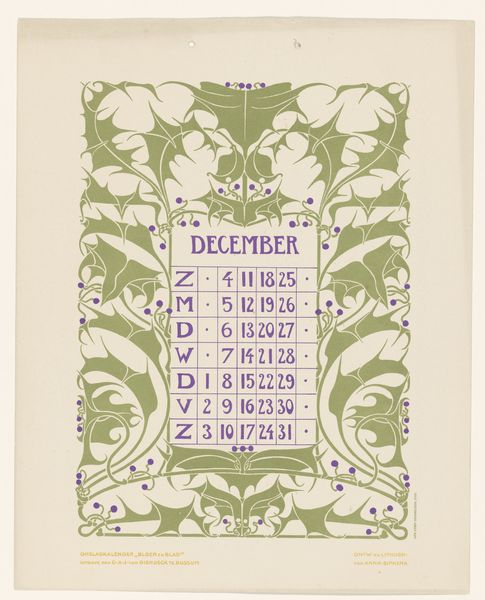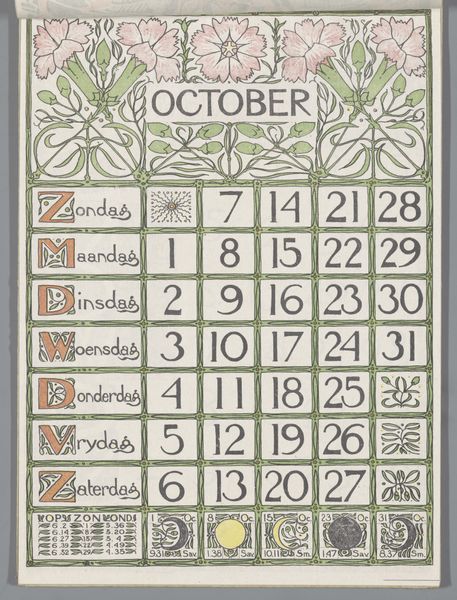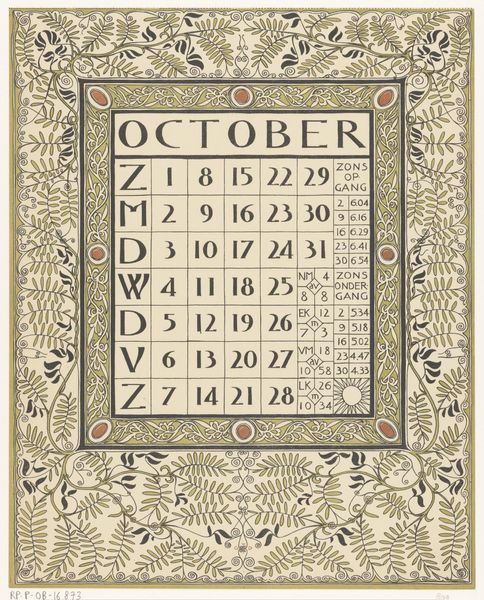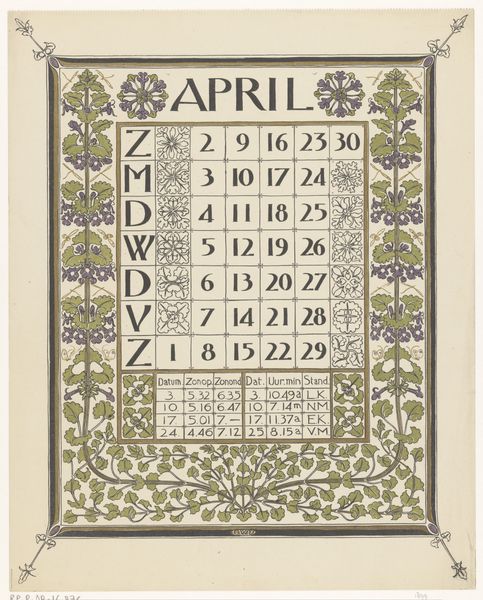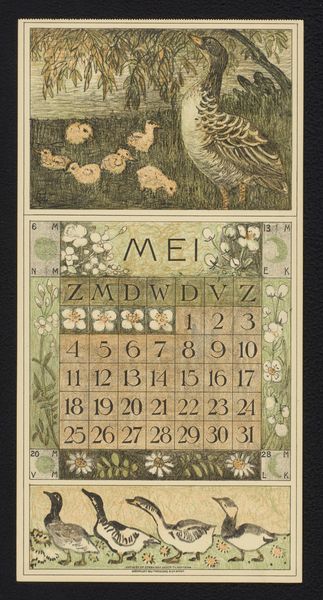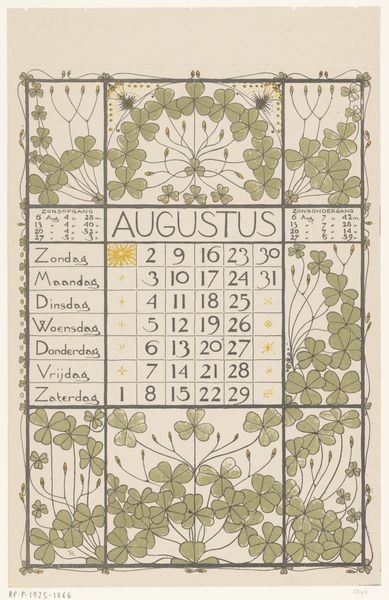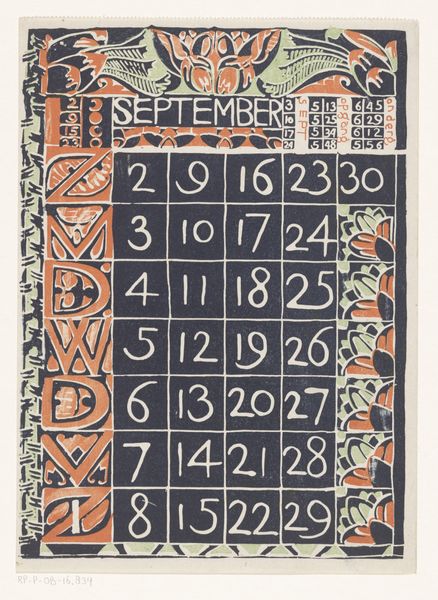
drawing, graphic-art, print, paper
#
drawing
#
graphic-art
#
organic
#
art-nouveau
# print
#
flower
#
paper
#
pattern design
#
organic pattern
#
pattern repetition
#
decorative-art
Dimensions: height 375 mm, width 241 mm
Copyright: Rijks Museum: Open Domain
This is Theo Nieuwenhuis's "Kalenderblad voor september 1896," a print now held in the Rijksmuseum. It presents a seemingly straightforward grid of days framed by stylized natural forms. But let's delve into its structure. Notice the stark contrast between the rigid, geometric calendar and the organic, flowing plant motifs. Nieuwenhuis is playing with the tension between the man-made and the natural, a common theme in art nouveau. The careful arrangement of leaves and flowers isn’t merely decorative; it’s a structural element that seeks to soften the harsh lines of the calendar, integrating nature into the everyday. Observe, too, the limited palette: muted greens and yellows that evoke the transition from summer to autumn. This isn’t just about aesthetics; it's about using color to create a specific mood. The calendar becomes more than just a functional object; it's a meditation on time, nature, and our place within them. It challenges fixed notions of design by blurring the lines between form and function, art and life.
Comments
No comments
Be the first to comment and join the conversation on the ultimate creative platform.
